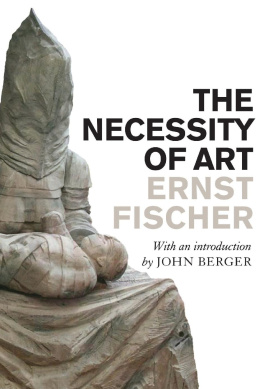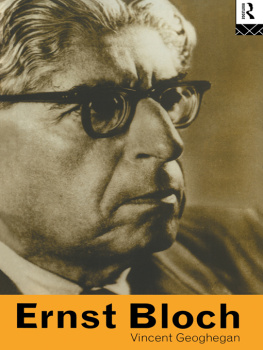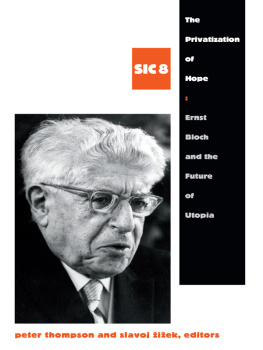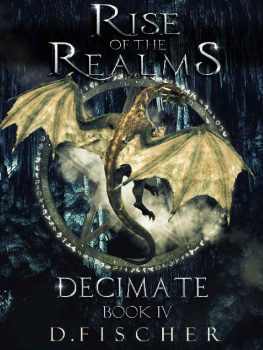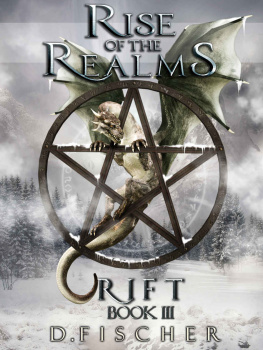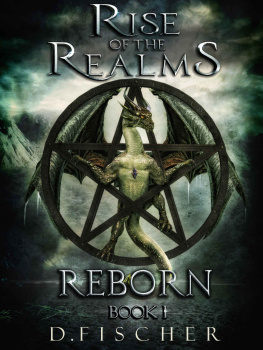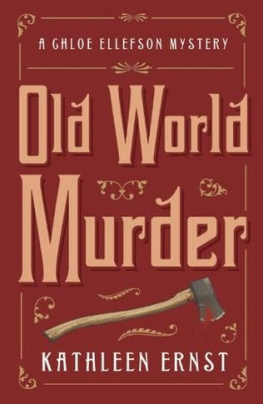Ernst Fischer - Murder at the Kemerovo Mines: Trotskyite Plotters at Work
Here you can read online Ernst Fischer - Murder at the Kemerovo Mines: Trotskyite Plotters at Work full text of the book (entire story) in english for free. Download pdf and epub, get meaning, cover and reviews about this ebook. City: New York City, year: 1937, publisher: Workers Library Publishers, genre: History. Description of the work, (preface) as well as reviews are available. Best literature library LitArk.com created for fans of good reading and offers a wide selection of genres:
Romance novel
Science fiction
Adventure
Detective
Science
History
Home and family
Prose
Art
Politics
Computer
Non-fiction
Religion
Business
Children
Humor
Choose a favorite category and find really read worthwhile books. Enjoy immersion in the world of imagination, feel the emotions of the characters or learn something new for yourself, make an fascinating discovery.

- Book:Murder at the Kemerovo Mines: Trotskyite Plotters at Work
- Author:
- Publisher:Workers Library Publishers
- Genre:
- Year:1937
- City:New York City
- Rating:5 / 5
- Favourites:Add to favourites
- Your mark:
- 100
- 1
- 2
- 3
- 4
- 5
Murder at the Kemerovo Mines: Trotskyite Plotters at Work: summary, description and annotation
We offer to read an annotation, description, summary or preface (depends on what the author of the book "Murder at the Kemerovo Mines: Trotskyite Plotters at Work" wrote himself). If you haven't found the necessary information about the book — write in the comments, we will try to find it.
Murder at the Kemerovo Mines: Trotskyite Plotters at Work — read online for free the complete book (whole text) full work
Below is the text of the book, divided by pages. System saving the place of the last page read, allows you to conveniently read the book "Murder at the Kemerovo Mines: Trotskyite Plotters at Work" online for free, without having to search again every time where you left off. Put a bookmark, and you can go to the page where you finished reading at any time.
Font size:
Interval:
Bookmark:
Published by Workers Library Publishers
P.O. Box 148, Sta. D, New York City
March, 1937
ON DECEMBER 28, 1935, Pichugin and Porshnev, two miners working the Central Mine of Kemerovo Colliery in the Kuzbas (Kuznetsk coalfield), were gassed by carbon monoxide and died of asphyxiation. It was only thanks to the caution of an experienced hewer, the Stakhanovite Velikzhanin, that the disaster was not worse than it actually was. Velikzhanin led the other workers out of the gas-filled gallery in good time.
The miners of the Central Mine grew very uneasy. They had several times complained that the ventilation was not in working order and that gas was seeping into the mine. On several previous occasions miners had shown symptoms of gas poisoning, but the mine management paid no heed to it. The very day before the disaster, December 27, several workers complained the mine engineers accused the workers of laziness and of sabotaging the fulfillment of the plan.
Bobrov, one of the miners, had appealed to Lashchenko, the engineer in charge of ventilation, to put the ventilation system into proper working order. Lashchenko promised to do so, but did nothing about it. When Chekalin and other workers again appealed to Lashchenko to see to it that the ventilation worked properly, Lashchenko replied: "We have no motors. We'll install motors when the Soviet government has money enough. Meanwhile we can do nothing about it."
THE death of Pichugin and Porshnev did not lead to any change in the intolerable conditions in the Central Mine. The lives of the workers were still in daily danger from gas; shot-firing still continued to be a game of life and death. One day Byelogolovy, a shot-firer, refused to fire a charge because he had ascertained that there was four per cent fire-damp in the gallery and the shot might result in an explosion. Lashchenko and Leonenko, two engineers who were present in the gallery, assured the workers that the shot was absolutely safe and that Byelogolovy's fears were entirely unfounded. This constant talk about fire-damp in the mine was just laughable, they asserted. Byelogolovy shook his head and gave the warning: "Look out!" At this instant Lashchenko and Leonenko took to their heels and ran as though for their lives. Apparently there was a mysterious gas in the mine which was absolutely safe for workers but highly dangerous for engineers and experts. Byelogolovy once again shook his head and made up his mind to watch the engineers more closely. It was true that the engineers were called "comrades" but there was something fishy about it all the same....
Several days later, Pozeluyenko, leader of a Stakhanov brigade in the Central Mine, fired a charge. An explosion ensued, but fortunately without loss of life. But the smoke that filled the gallery was so dense that Pozeluyenko had to call off work for three hours. When he reported the incident to Lashchenko, the engineer laughed ironically and said: "Why didn't you take your jackets off and drive the smoke away?" The ventilation engineer apparently thought that the Central Mine needed no other ventilation system than the workers' jackets. It is true that he himself took to his heels when the shot-firer Byelogolovy called "Look out!"but the miners apparently were supposed to carry on amidst gas and smoke.
THESE episodes and the behavior of the engineers caused much dissatisfaction and even bitterness among the miners. Too many strange and inexplicable things were happening in the mine. Borings were continually being undertaken which resulted in eruptions of quicksand and gas; blind workings were continually being formed, in which gas accumulated; drainage ditches were not dug, so that the miners frequently had to work standing in water; miners were continually falling sick and being sent to the hospital with signs of asphyxiation; sickness among the miners was becoming rife. Complaints remained unheeded; the engineers either laughed them off or accused the workers of wanting to hamper coal output. Stickling, the chief engineer, a German subject, could not be persuaded to interfere, while Peshekhonov, the mine manager, accused the workers of "laziness". There seemed to be a conspiracy against the workers. Working conditions were no better than in any capitalist country, and if complaints were made the most one got was the ironical reply from some engineer: "Yes, it's a joyous life!"
IN SPITE of all these difficulties and obstacles, the Stakhanov movement spread to the workers of the Central Mine as well. The miners began to study how to arrange working conditions more rationally and to increase production on their own initiative. Expert workers who enjoyed the respect of their comrades, like Maximenko, Vdovin and Nemychin, began to arouse enthusiasm among the workers for Stakhanov methods and to lift them out of their state of depression. They made arrangements for a Stakhanov Week, which was to begin on September 23, 1936.
And on September 23, 1936, the first day of the Stakhanov Week, a terrible explosion took place in the Central Mine. Ten men were killed and fourteen severely injured. Among the dead were the finest Stakhanovites in the mine, Maximenko, Vdovin and Nemychin.
WAS this all mere accident? At the graveside of their dead comrades the miners recalled how Lashchenko and Leonenko had taken to their heels when the shot-firer Byelogovy had given the signal "Look out!" They recalled Lashchenko's ironical remark: "Why didn't you take your jackets off and drive the smoke away?" They recalled his words: "We have no motors. We'll install motors when the Soviet government has money enough!" They recalled all the promises, complaints and suggestions for improvements which had come to nothing. They recalled all the strange instructions given by the engineers.
Was all this mere accident? Was it an accident that motors for the ventilating system were found concealed in the mine stores, although Lashchenko had denied there were any? Was it an accident that in the first half of 1936 only 24 per cent of the assigned safety appliances were issued? Was it an accident that miners were set to work in gas-filled blind workings and that the safety devices did not function?
Was it an accident that so many workers had died in the Central Mine, or did they die because they were intended to die?
At the graveside of their dead comrades the survivors asked themselves, their hearts full of misgivings: "Were they murdered? An if so, who were the murderers?"
Workers murdered in Kemerovo! Workers murdered in the Soviet Union! Could there be enemies and murderers of workers in the workers' and peasants' state?
Like the organs of Soviet government, the miners of Kemerovo set seriously to work to find out the truth about the death of their comrades.
WERE the engineers and the mine management just criminally negligent, just cynically reckless with the lives of the workers, or were they something moreenemies of the workers, murderers of the workers?
Who were these engineers and managers? Where did they come from? What was known about their past?
There was Emil Stickling, a German engineer who had succeeded Arimont. Arimont, also a German engineer, had been expelled from the Soviet Union for anti-Soviet activities. Stickling was a fascist; he made no secret of his fascist sentiments. His "Fuehrer" Hitler had sworn to exterminate Bolshevism. His party comrades were undermining the Spanish Republic and were throwing bombs on Madridon schools, kindergartens and hospitals. Stickling was chief engineer of the Central Mine and its leading expert. Are German engineers so ignorant as to undertake borings in the most dangerous places and to manage mines in such a way as to ruin them? Or... ?
Next pageFont size:
Interval:
Bookmark:
Similar books «Murder at the Kemerovo Mines: Trotskyite Plotters at Work»
Look at similar books to Murder at the Kemerovo Mines: Trotskyite Plotters at Work. We have selected literature similar in name and meaning in the hope of providing readers with more options to find new, interesting, not yet read works.
Discussion, reviews of the book Murder at the Kemerovo Mines: Trotskyite Plotters at Work and just readers' own opinions. Leave your comments, write what you think about the work, its meaning or the main characters. Specify what exactly you liked and what you didn't like, and why you think so.

